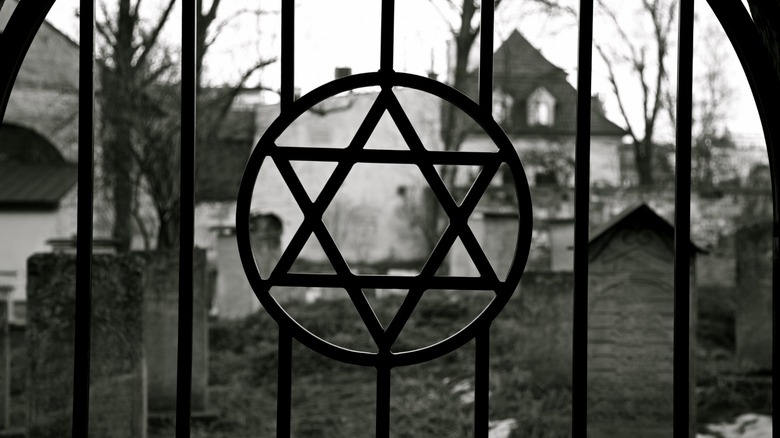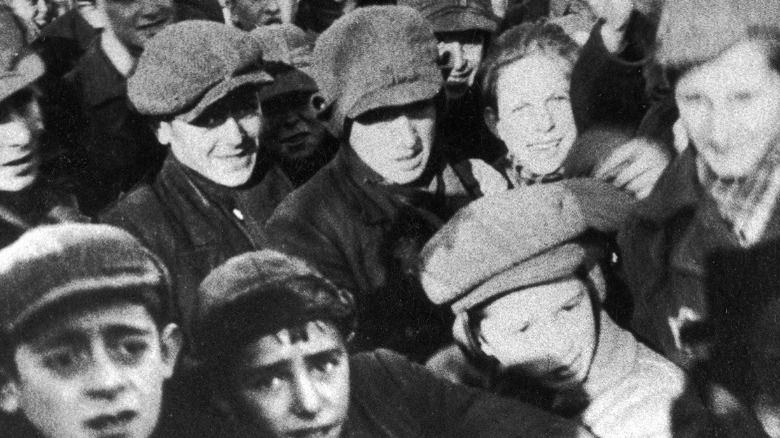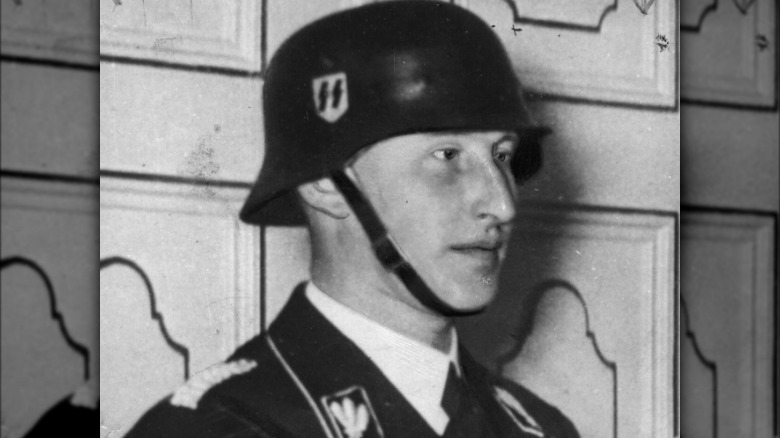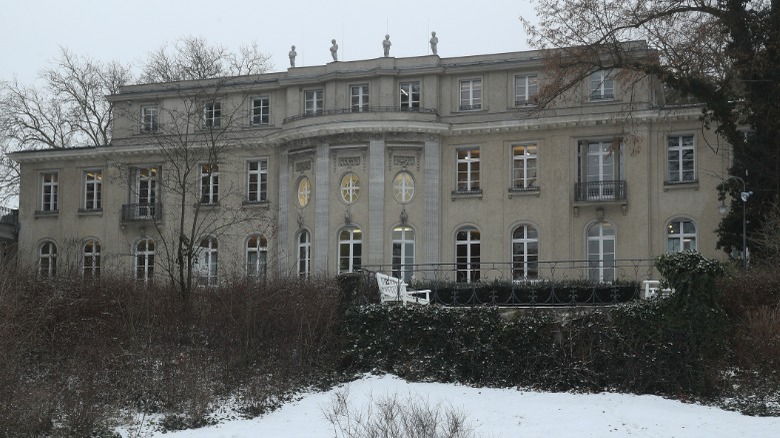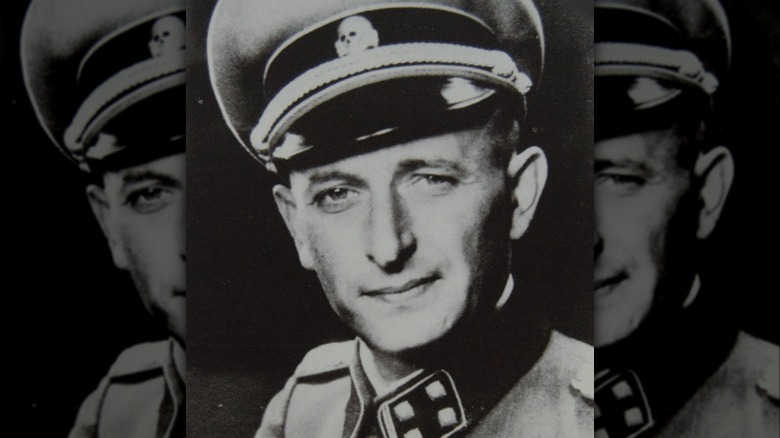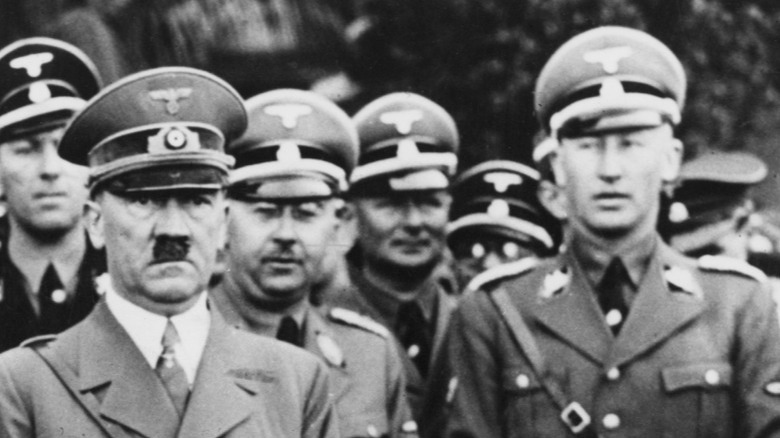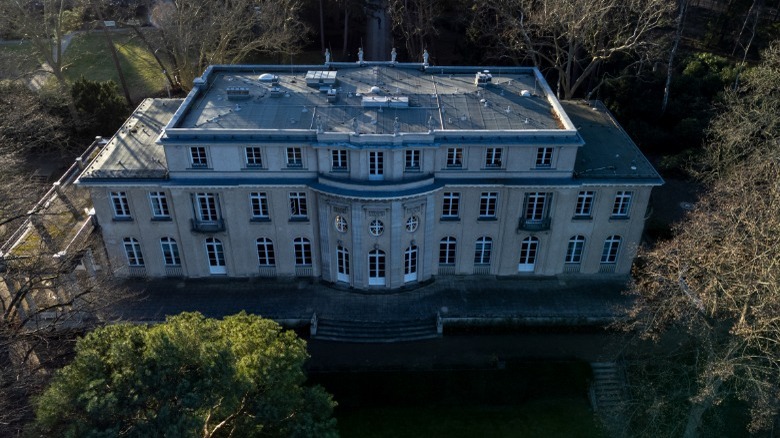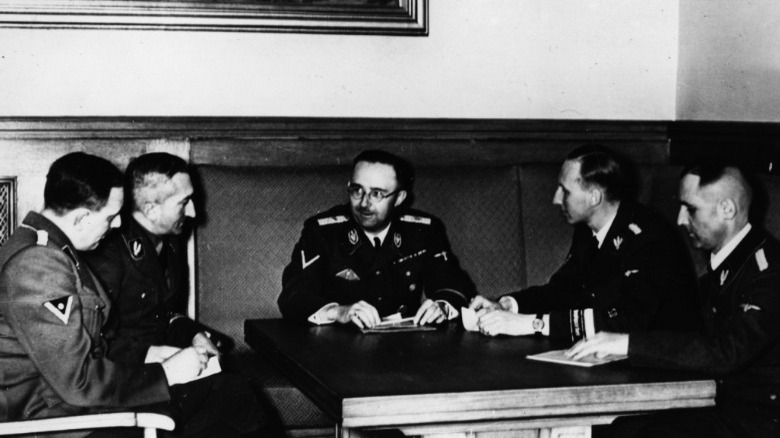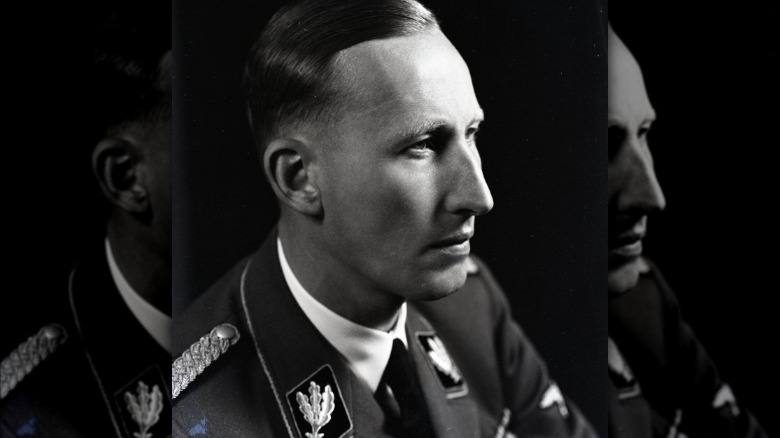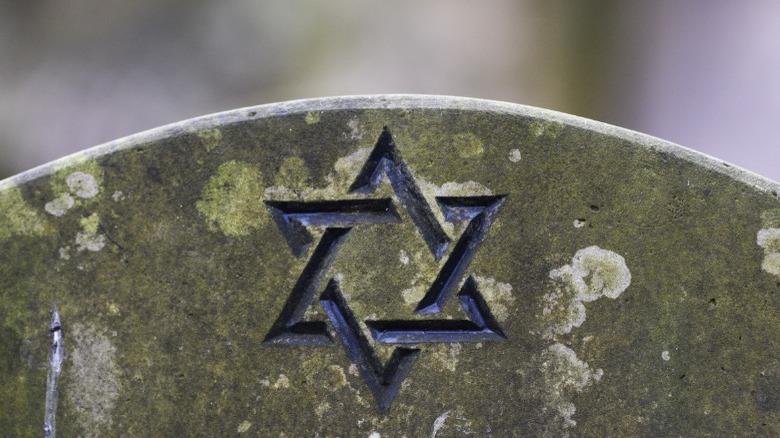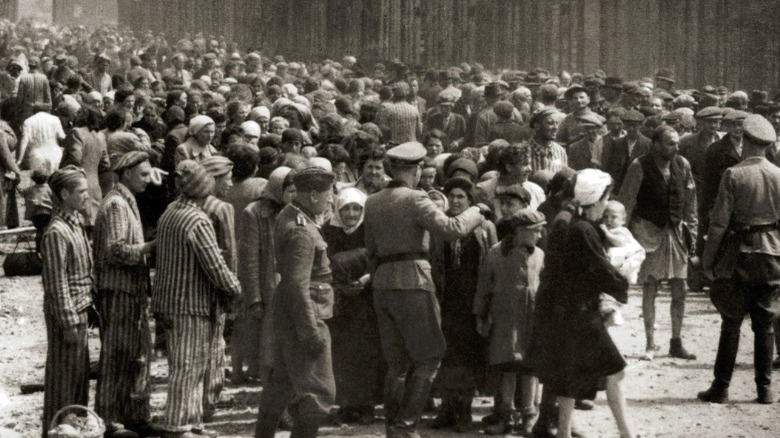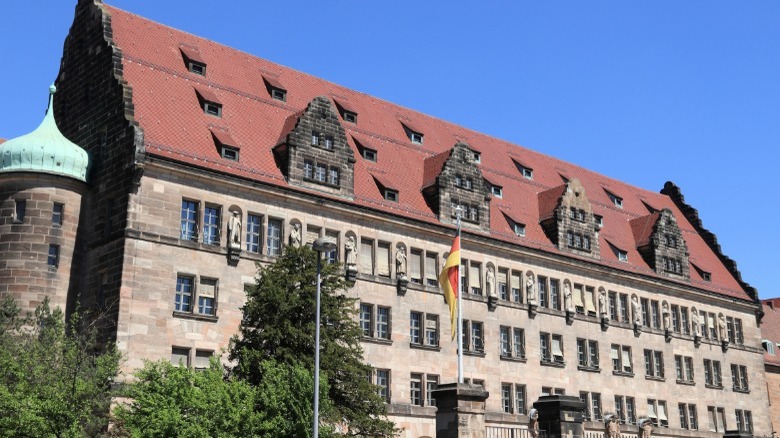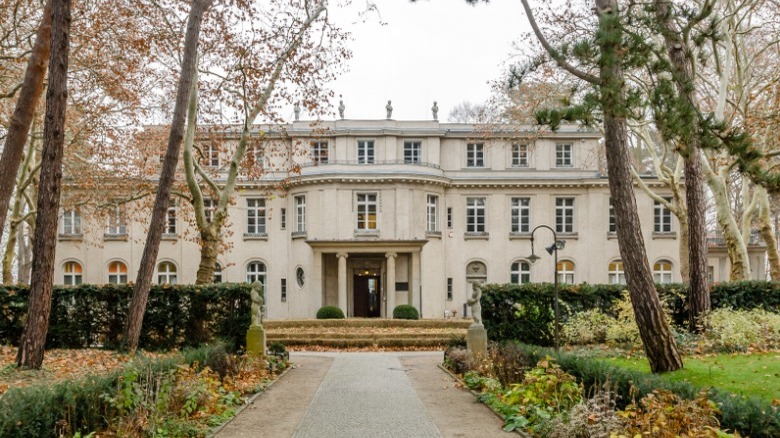The Wannsee Conference Of 1942: The Birthplace Of Nazi Germany's Final Solution
The Holocaust, six decades later, continues to stand out as a particularly barbaric and heinous event in history. Brought on by the bloodlust of Austrian dictator and Fuhrer of Germany, Adolf Hitler, the Holocaust was the product of years of legalized antisemitism that stripped German Jews of their citizenship, rights, and dignity. As the National World War II Museum explains, legalized discrimination against Jews began in Germany in the mid-1930s after the Nazis first took over. It's estimated that more than 6 million Jews died as a result of the Holocaust and Nazi policies.
Yet, for all of the history that has been written on the Holocaust, one of the most important events has largely escaped public attention: the Wannsee Conference of 1942. The conference took place in January at the Wannsee House in Berlin and had vast repercussions for the entire Holocaust. It was here that Nazi officials discussed plans to eliminate Jews from Europe, which they referred to ominously as the "final solution."
Following the conference, the Nazis increased their efforts to eliminate the Jews, which included mass deportations from ghettos to concentration camps. This is the Wannsee Conference of 1942: the birthplace of Nazi Germany's Final Solution explained.
The years prior to the Wannsee Conference
In the years leading up to the Wannsee Conference of 1942, Jews under the thumb of Adolf Hitler's Nazi regime already found themselves in a life-and-death struggle. As History explains, one of the first large-scale killings of Jews occurred in 1938 and is known as the Night of Broken Glass, or Kristallnacht. While some Jews were able to escape Germany and Europe before the mass terror began, the Holocaust entered a new dimension when the Nazis invaded Poland in 1939.
The Nazis forced the Polish Jews to live in overcrowded and unsanitary ghettos, which was merely a holding pattern for their eventual transportation to the many concentration camps that would soon dot the continent. By late 1941, the Nazis were already experimenting with mass murder, targeting Jews, the disabled, and Soviet prisoners of war. According to the National World War II Museum, the Nazis murdered just shy of 1 million Jews when they invaded the Soviet Union in 1941. By the end of the year, the first extermination center at the Chelmno concentration camp was operational.
This set the stage for the 1942 Wannsee Conference, which took place at the beginning of the year in January. Nazi leaders decided that with the recent occupation of Poland and the planned eventual occupation of the rest of the Soviet Union, they needed a plan for "evacuating" the Jews from the continent, which was just a euphemism for deporting and later killing them.
The conference's organizer: Reinhard Heydrich
The responsibility for planning and organizing the Wannsee Conference largely fell to one man: Reinhard Heydrich. Born in 1904 in Halle, Germany, Heydrich joined the Nazis in 1931 after getting kicked out of the German Navy (via Britannica). He immediately joined the Schutzstaffel or SS, the violent paramilitary wing of the Nazi party. As the Holocaust Encyclopedia explains, Heydrich had been exposed to antisemitic and racist ideology first as a kid and later as a teenager, and his wife was a strong supporter of national socialism — the Nazi's ideology.
He eventually became acquaintances with Heinrich Himmler, who put him in charge of developing the Sicherheitsdienst (SD), the Security Service branch of the larger SS. Within a few years, the SD was one of the most important Nazi agencies for gathering political intelligence, and soon Heydrich was given the role of chief of the Gestapo — the Nazi's secret police. In addition to investigating "World Jewry," Heydrich also set his sights on Marxists, the Catholic and Lutheran clergy, Freemasons, and other perceived political opponents.
For much of the 1930s, Heydrich spent his time building the police and intelligence apparatus for the Nazi party, making it very formidable by the time of the 1942 Wannsee Conference. Following the conference, Heydrich continued to spread terror throughout Eastern Europe, until he died from injuries from a hand grenade attack just a few months later in June.
Planning the Wannsee Conference
Planning for the Wannsee Conference began in July 1941, but for years, high-ranking Nazis had already been plotting the extermination of Jewish residents. After Reinhard Heydrich had proved his bonafide leadership and administration, one of the top leaders of the Nazi party, Hermann Göring, put him in charge of the "Jewish Question" in January 1939 (via the Holocaust Encyclopedia). Later, when the Nazis invaded Poland and the Soviet Union, Heydrich immediately ordered that all Jewish members of the Soviet Union's government and communist party be liquidated.
In July 1941, just a month after the invasion of the Soviet Union, Göring once again had Heydrich look at the "Jewish Question," this time to figure out a "total solution" — a euphemism for murder. As explained in "The Wannsee Conference and the Genocide of the European Jews," Göring's authority for eliminating the Jews was given directly by Adolf Hitler, and he essentially delegated the task to Heydrich. In response, Heydrich made plans to convene what would eventually be known as the Wannsee Conference.
Initially, the conference was scheduled to take place in early December. However, just a few days before the conference was set to begin, Heydrich changed the date and location. Instead of being held at the Interpol office, it was now going to be held at the SS office. The conference was also pushed out over a month, with the date of January 20, 1942 set.
The Wannsee Conference attendees
Though the Wannsee Conference was an important moment in the Holocaust, it was not a very well-attended event. Reinhard Heydrich only invited 14 others to the conference, not including German Fuhrer Adolf Hitler nor Heydrich's direct superior Hermann Göring. Still, there were several high-ranking members of the Nazi elite at Wannsee (via the Holocaust Encyclopedia). The SS alone had six representatives, which included Heydrich and five others.
There were also representatives from the Ministry of Justice, the Foreign Office, the Gestapo, and the Nazi Party itself. In addition, there was also a member of Hitler's personal cabinet at Wannsee: Wilhelm Kritzinger. Apart from Heydrich, probably the most infamous member of the conference was Adolf Eichmann, the Chief of the Reich Security Main Office (RSHA) for Jewish Affairs. As Britannica explains, Eichmann was a very prominent Nazi, having joined the party back in 1932 — a decade before the conference.
With the exception of the Wehrmacht and the Ministry of Transportation, pretty much every major government agency had a representative in attendance. Even though neither Hitler nor Göring was there, the conference was still full of influential Nazis. Importantly, the men who attended the conference were not there to debate the efficacy of eliminating Jewish residents in Europe. Rather, they debated the methodology that would be involved, with extermination already a foregone conclusion.
The Wannsee Conference proceedings
The Wannsee Conference began on January 20, 1942, in the Wannsee suburb of Berlin. According to the Wannsee Protocol (via the House of the Wannsee Conference memorial), Reinhard Heydrich began the proceedings by announcing that he was in charge of organizing the "final solution of the Jewish question." He quickly claimed that the two most important aspects of the plan were to remove Jewish residents from the "spheres of life" and "living space" of other Germans. As Heydrich explained, previously the Nazis had focused on the emigration of Jewish residents out of Germany and had successfully pushed out over half a million Jews prior to October 1941.
He told the conference attendees that he was planning for the eventual elimination of 11 million Jews from Europe, with 5 million of them coming from the Soviet Union alone. Before killing them, however, Heydrich planned to use as many as possible for labor purposes of building roads, though he also suggested that many of them would perish during this enterprise, too.
According to Heydrich, Europe would be "combed through from West to East" to pinpoint all Jewish residents, and they would be sent to ghettos before being moved East to their deaths. Residents over 65 would be sent to a special ghetto because they were thought to be too old to "evacuate." The Nuremberg Laws were to be used to determine which residents were considered Jewish, and thus which would be deported.
Heydrich was met with support
As you might expect from a group of cold-blooded Nazis, Reinhard Heydrich's proposal to eliminate Jews from Europe was met with enthusiasm rather than disdain. As noted by the Wannsee Protocol (via the House of the Wannsee Conference memorial), following Heydrich's introduction, one of the participants, Dr. Joseph Buhler, stated how eager he was to begin the final solution and wanted it to commence as "rapidly as possible." He blamed Jews for hurting Germany economically and suggested that most of them were unable to work.
Another one of the attendees, Otto Hoffman — an SS member in the Race and Settlement Main Office — urged that sterilization be used. He was backed up by Dr. Wilhelm Stuckart, who suggested it would simplify administrative work connected with identifying whether citizens were Jewish or not.
One of the few who suggested any pushback to the quick evacuation and elimination of Jews was State Secretary Erich Neumann, who was worried that if Jews working in industries producing goods for the war were evacuated too quickly, then the economy might suffer due to the loss of labor. He wanted to make sure there would be adequate replacements for them to make sure the war effort did not suffer. He was quickly assured by Heydrich that Jews in the wartime labor industries would not be evacuated under the current protocol.
The organizers' chilling celebration
Following the end of the Wannsee Conference, Reinhard Heydrich seemed to be quite pleased with himself. After laying out his heartless and callous plans for the evacuation and eventual elimination of Jewish residents from Europe, he went for a celebration with fellow high-ranking Nazis Adolf Eichmann and Heinrich Muller (via Martin Gilbert's "The Holocaust: A History of the Jews in Europe During the Second World War"). They sat around drinking brandy and having a celebratory smoke, something Eichmann noted was atypical for Heydrich.
The conference only lasted for an hour and a half, but Heydrich seemed very relieved when it was over (via the National World War II Museum). Not only was the final solution now in place, something he had first been tasked with planning years earlier, but it was his show to run. Though his life would be cut short just months later, Heydrich was poised to head the Nazi's extermination efforts for the remainder of the war. Still, the Holocaust proceeded along following his demise, massively influenced by the conference he had held in the winter of 1942.
The Wannsee Protocol
Following the end of the Wannsee Conference, the 90 minutes of proceedings were transcribed and put into written form, known as the Wannsee Protocol. The document was only 15 pages long, but there were 30 copies made in total (via the National World War II Museum). It is not a direct accounting of the proceedings, though it mentions much of what was discussed. It was created initially by Adolf Eichmann following the conference's end, but Heydrich also made his own edits before releasing it.
The Protocol begins by listing the names of all the participants, before going into Heydrich's speech and the subsequent discussion surrounding it. The Wannsee Protocol ends with Heydrich requesting "appropriate support" for implementing the mass murder of Jews. Of the 30 copies of the Wannsee Protocol that were originally produced, most of them did not survive the war. The existence of the protocol was first discovered two years after the war by Robert Kempner, who found the 16th copy, and who was himself nearly a victim of the Holocaust.
Historians disagree on its significance
Ever since the Wannsee Conference and Wannsee Protocol were first discovered by Robert Kempner in 1947, they have been a source of controversy for historians. While there is no doubting the fact that it happened or whether the protocol is accurate, there has been a lively debate over the significance of the conference within the wider history of World War II and the Holocaust. As Mark Roseman explains in "The Wannsee Conference and the Final Solution: A Reconsideration," many historians are divided over whether the conference was a huge turning point in the Holocaust or if it has been given outsized significance.
Roseman claims that for many historians, the conference is significant only because it "offers a clear picture" of Heydrich's designs for the final solution, but they do not see it as a "radical new plan" that spurred the final solution into existence. For many others, the purpose of the conference is a complete mystery and is not considered overly important. Roseman himself argues that due to the absence of other clarifying documentation, much of which was destroyed, it is impossible to understand the total significance of the conference, and its true importance can only be speculated upon.
The effect of the Wannsee Conference
Immediately following the conclusion of the Wannsee Conference, the participants mobilized to implement the protocol. On January 23, just three days after it ended, more than 500 Jews were drowned in Novi Sad, Yugoslavia (present-day Serbia) by Hungarian soldiers (via Martin Gilbert's "The Holocaust: A History of the Jews of Europe During the Second World War"). A week after that on January 30, Adolf Hitler gave a speech in Berlin where he excoriated Jewish residents and claimed that the war would end with the "complete annihilation of the Jews."
According to "The Wannsee Conference and the Genocide of the European Jews," the next day, Adolf Eichmann started informing various parts of the police and security apparatus to prepare for the implementation of the final solution in Germany, Austria, Bohemia, and Moravia. Just over a month after the conference ended, the Belzec extermination camp was completed and made active. Throughout the Nazi-occupied parts of Eastern Europe, Jews were immediately singled out for further violence, and many also died of starvation and disease. The Jewish community of Odesa, Ukraine, was virtually eliminated the previous October, and the remnants were rounded up just as the conference was about to get underway.
The Wannsee Conference and the Nuremberg Trials
The existence of the Wannsee Conference and subsequent protocol were first discovered by American authorities in March of 1947, nearly two years after Germany had surrendered the war (via Mark Roseman's "The Wannsee Conference and the Final Solution"). The protocol was unearthed by Robert Kempner, a lawyer working for the American government. Kempner and his staff were preparing for the upcoming Nuremberg Trials when they found the document.
Immediately, Kempner understood the significance of what he had found, and his boss, Brigadier General Telford Taylor, also viewed the protocol as highly significant. Later, the documents were used at the Nuremberg Trials, where they provided evidence against the defendants. One of them, Wilhelm Stuckart, pretended to not remember the conference at all. Another, Wilhelm Kritzinger, claimed that they had not discussed killing Jews at all. However, both of them were contradicted by fellow Nazi Bernhard Losener, who acknowledged the existence of the conference as well as its purpose.
Another attendee of the conference, Adolf Eichmann, was also haunted by his participation during his 1961 trial. Eichmann, a wanted Nazi, had been captured after living in Argentina the year prior by Israeli Mossad agents and was put on trial in Jerusalem soon after (via Britannica). During the trial after his intense manhunt, Eichmann admitted to being at the conference and explicitly remembered discussing "different methods of killing" (via Deutsche Welle).
The Wannsee House today
More than eight decades after the Wannsee Conference took place, the Wannsee House has been converted into a Holocaust memorial. According to the National World War II Museum, the idea to make the house into a memorial was first proposed in 1965 by Joseph Wulf, a former victim of the Holocaust and historian. Due to Wulf's push, the memorial first opened in 1992, on the conference's 50th anniversary (via the House of the Wannsee Conference memorial).
The memorial has multiple exhibits, including a permanent exhibit that explains the conference and its wider significance within Holocaust history. The permanent exhibition was reopened in 2020 on the 75th anniversary of the Holocaust's end (via Deutsche Welle). The exhibit is made up of nine separate rooms, each explaining a different time period of the conference and the Holocaust. There are also several online exhibits, as well as a library dedicated to Holocaust awareness and history. As a tribute to Joseph Wulf, the library was named in his honor.
In 2022, there was a symposium on the conference that was held at the memorial, and their website has lots of information about the Holocaust and the conference's significance. Occasionally, there are also special exhibits, which delve even deeper into Holocaust history.
